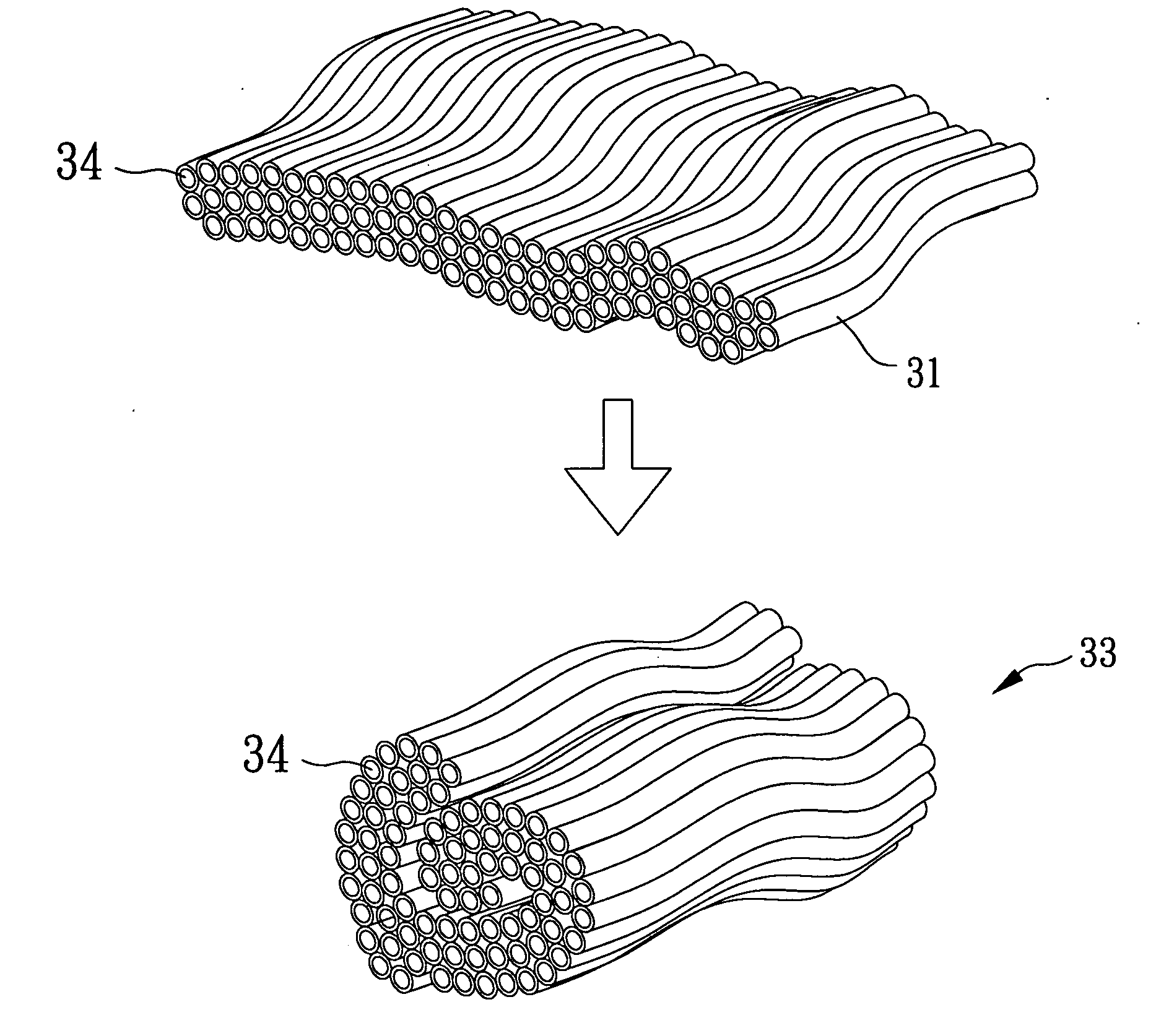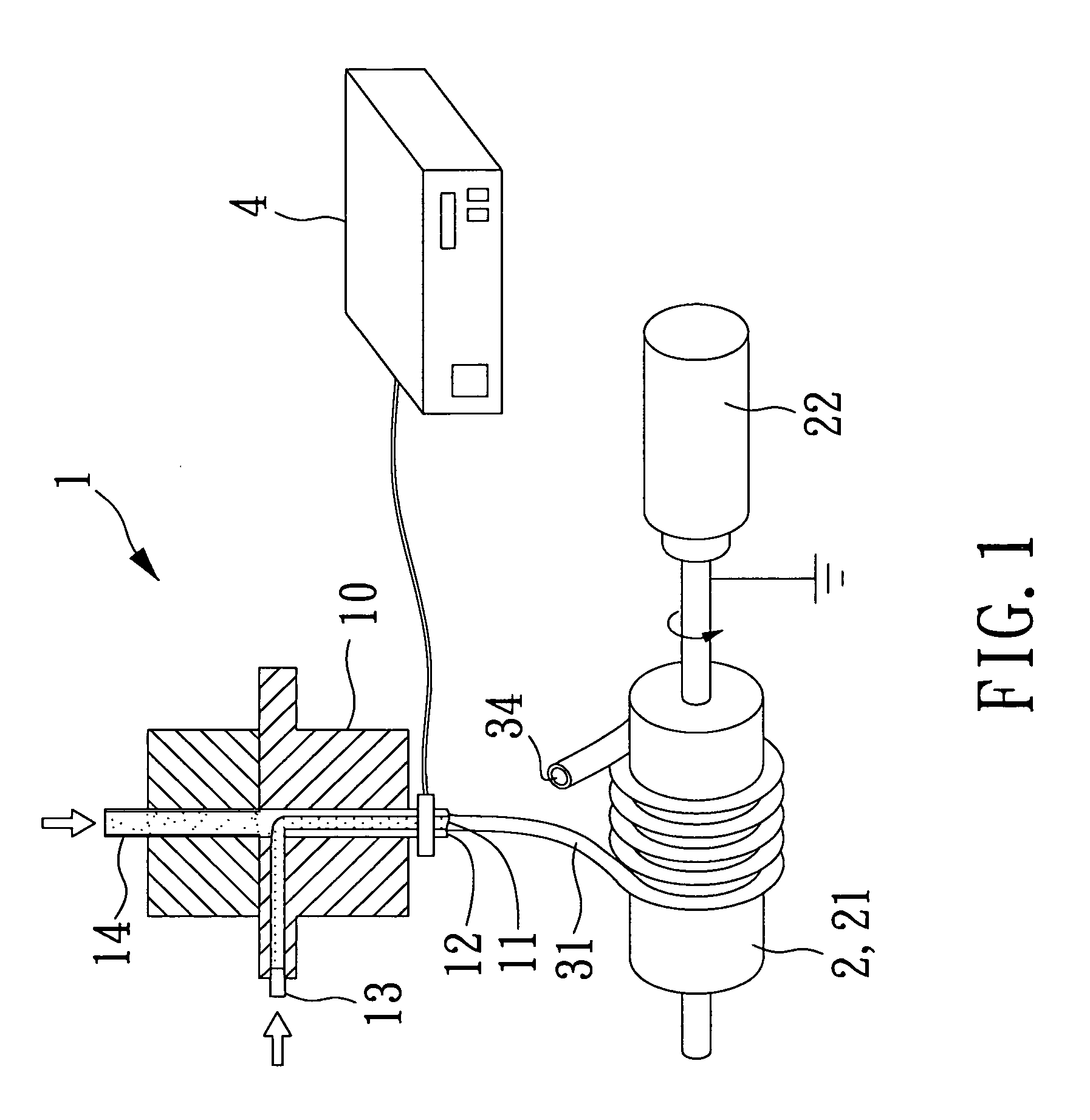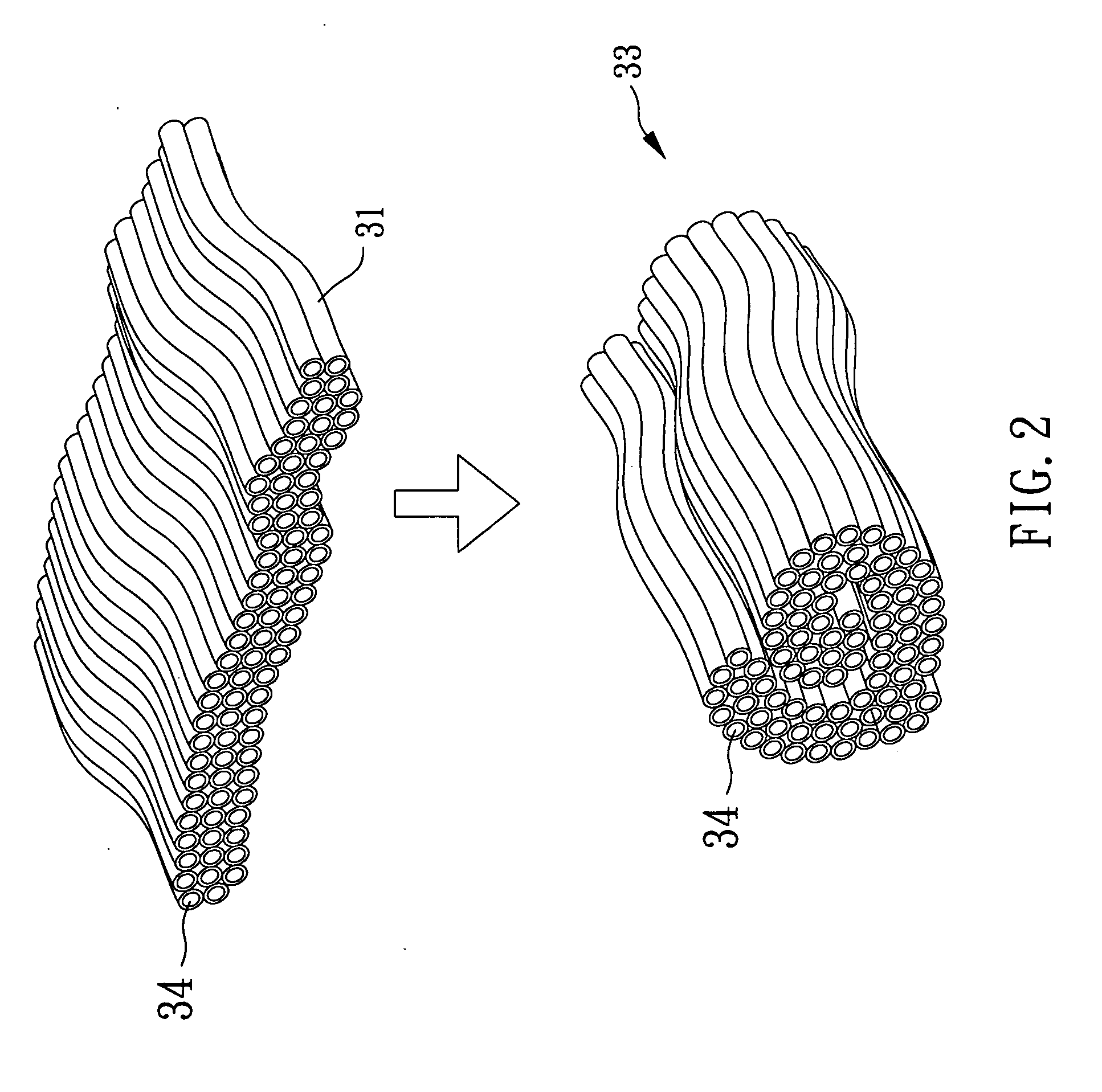Bio-acceptable conduits and method providing the same
a technology of nerve guide conduit and bio-acceptable, applied in the field of nerve guide conduit, can solve the problems of limited limited fda certified commercial nerve guide conduits, and difficulty in seeding cells in the inner part of the scaffold, so as to reduce the dimension of the guiding structure unit and low cost
- Summary
- Abstract
- Description
- Claims
- Application Information
AI Technical Summary
Benefits of technology
Problems solved by technology
Method used
Image
Examples
example 1
Solution Preparation and Fabrication of Hollow Fibers Scaffold by Electrospinning
[0031]Solutions for electrospinning were (1) 10 wt % Poly-L-lactic acid (PLLA, medical grade, Mw=140 kDa, kindly supplied by BioTechOne Inc. Taiwan) in mixed N,N-Dimethyl formamide / Dichloromethane solution (DMF, HCON(CH3)2, 99.8%, Tedia, USA / DCM, CH2Cl2, reagent grade, 99.9%, Mallinckrodt, USA) and (2) Poly-ethylene glycol / Poly-ethylene oxide (PEG, Mw=35 kD, PEO, Mw=900 kD, both from Sigma-Aldrich, USA) 10 wt % aqueous solution. The electrospinning setup consisted of a static charger (SIMCO, CD50-P, Chargermaster, USA) 4, two syringe pumps (KDS-100, USA)13,14 and collecting unit 2, either a metal flat plate, or a rotating drum with a diameter of 7 cm.
[0032]The electrospinning processes were carried out in conjunction with a core / shell spinneret 10 to produce core / shell fibers with the following parameters: up to 20 kV of applied voltage and 10 to 20 centimeter of collecting distance.
[0033]In reference ...
example 2
[0039]Cell Culture
[0040]PC12 cells were obtained from ATCC (CRL-1721, HisnChu Food Industrial Research Center, Taiwan). Prior to the electrospinning process, PC12 cells were maintained in a DMEM medium supplemented with 10% fetal bovine serum (Biological Industries, Israel), 50 U / ml penicillin, and 50 mg / ml streptomycin (full medium, Biological Industries, Israel). Cells were routinely sub-cultured every 5-6 days. Neuronal differentiation of the PC12 cells was carried out by adding nerve growth factor (7.5 s mouse 50 ng / ml, NGF-7S, Sigma, USA) into DMEM with 1% FBS for the required time. Right before the electrospinning process, the cells and medium were added into the PEO / PEG solution and mixed for 10 min.
[0041]Preparation of Fluorescent PC12 Cells
[0042]PC12 cells were transfected with a pEGFP-N1 (Clontech) construct, which expresses a green fluorescent protein. Seventy microliters of Lipofectamine2000 (Invitrogen) and 25 μg of pEGFP-N1 DNA were mixed in 3 ml of OPTI-MEM and incuba...
PUM
| Property | Measurement | Unit |
|---|---|---|
| diameters | aaaaa | aaaaa |
| diameter | aaaaa | aaaaa |
| collecting distance | aaaaa | aaaaa |
Abstract
Description
Claims
Application Information
 Login to View More
Login to View More - R&D
- Intellectual Property
- Life Sciences
- Materials
- Tech Scout
- Unparalleled Data Quality
- Higher Quality Content
- 60% Fewer Hallucinations
Browse by: Latest US Patents, China's latest patents, Technical Efficacy Thesaurus, Application Domain, Technology Topic, Popular Technical Reports.
© 2025 PatSnap. All rights reserved.Legal|Privacy policy|Modern Slavery Act Transparency Statement|Sitemap|About US| Contact US: help@patsnap.com



